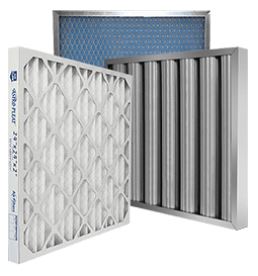In industrial ventilation, maintaining clean airflow is a critical consideration that cannot be underestimated. Inlet filters serve as essential components in protecting your people, equipment and products. In this blog, I will delve into the vital role of inlet filters, their operational mechanics, and the advantages they provide for your ventilation system.
Understanding Inlet Filters
Inlet filters function as protective barriers, intercepting dust, particulates, and various contaminants before they can enter the ventilation system. Through their preventive action against particle infiltration, these filters maintain clean airflow while safeguarding people, ultimately prolonging equipment lifespan, and maximizing operational efficiency for product production.
How Inlet Filters Work
The operational principle of inlet filters involves specialized filtration media that capture airborne particles. These filters can be constructed from various materials including synthetic compounds, fiberglass composites, or metallic mesh. The material selection is based on specific application and filtration requirements.
Air passes through these carefully designed filter media, which effectively trap contaminants while permitting purified air to enter the ventilation system. This filtration process is fundamental for maintaining ventilation system efficiency and preventing component deterioration.
Benefits of Using Inlet Filters
- Better Air Quality: Inlet filters contribute significantly to workplace air quality. They remove harmful particles, creating a healthier environment and minimize respiratory health risks.
- Longer Equipment Life: Inlet filters act as protective barriers, capturing harmful particles that could damage internal components of equipment. This protection significantly reduces repair costs and extends equipment life expectancy.
- Higher Product Quality: Airborne dust and particulates can affect the final quality of a product, especially in sensitive industries like electronics, pharmaceuticals, and food production. They can also cause physical damage, such as scratches or surface blemishes, that can reduce the product’s lifespan or aesthetic appeal.
Choosing the Right Inlet Filter
The selection of an appropriate inlet filter for your ventilation system is a crucial decision. Consider the following factors:
- Filtration Efficiency: Select a filter that effectively captures specific particulates relevant to your operational needs. In environments with fine particulate matter or hazardous substances, high-efficiency filtration systems may be essential.
- Airflow Resistance: Choose a filter design that maintains optimal airflow while minimizing resistance. Excessive resistance in the filter can significantly impact the operational efficiency of your ventilation system.
- Maintenance Requirements: Evaluate the filter’s maintenance demands and cleaning frequency. Consider whether a washable, reusable filter or a disposable option better suits your operational requirements.
- Material Compatibility: Verify that the chosen filter material demonstrates compatibility with your operational environment and potential contaminant exposure.
Conclusion
Inlet filters are a vital component in any ventilation system, serving as critical safeguards for maintaining air quality to protect people, equipment and products. Through strategic investment in premium inlet filters and implementation of consistent maintenance protocols, you can optimize performance, extend equipment lifespan, and enhance energy efficiency while fostering a healthier environment for people.
If you need help determining which inlet filter is right for your application, contact a ventilation expert at Eldridge and we will find the best solution to create a successful environment in your facility.
